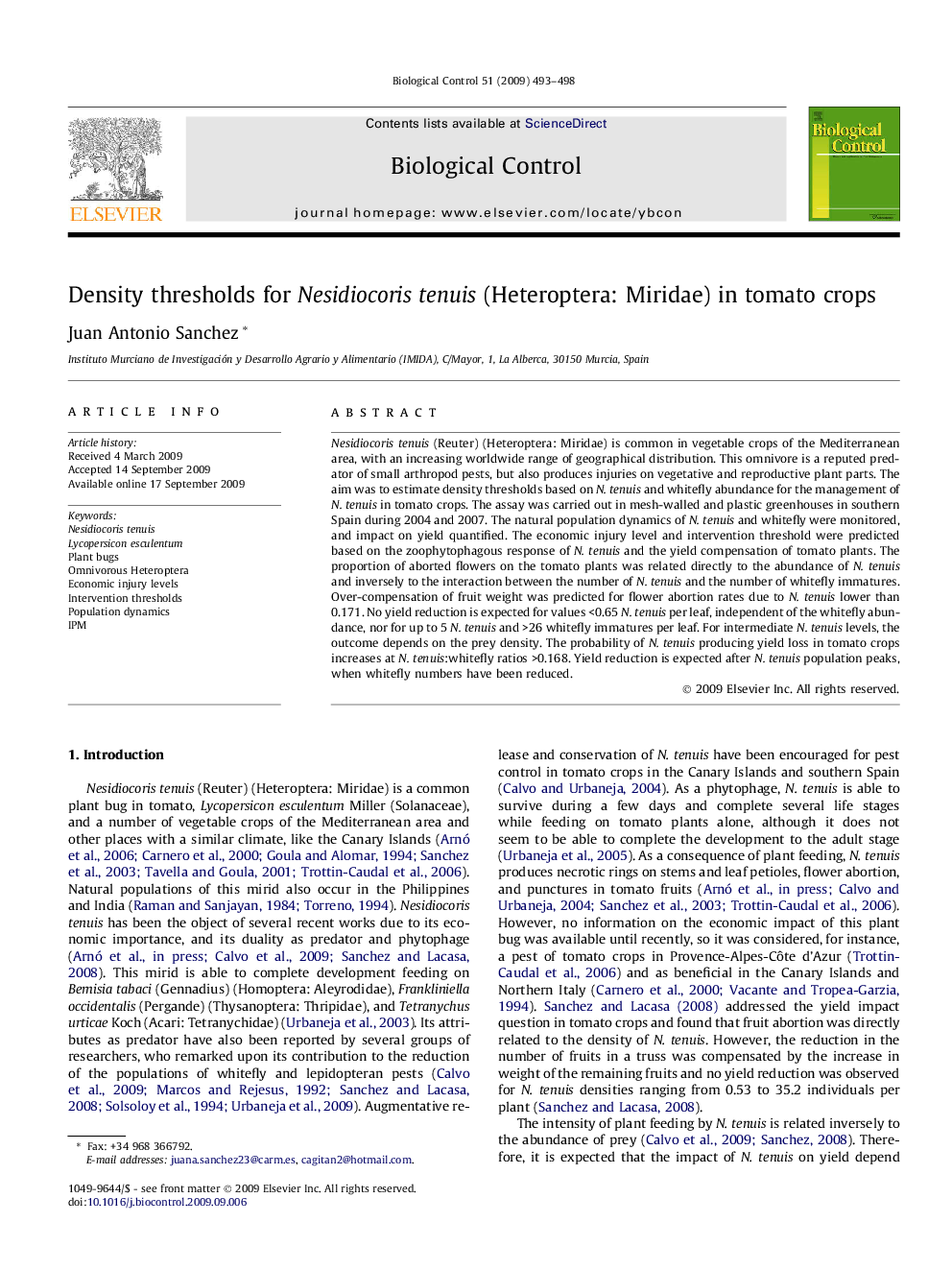| Article ID | Journal | Published Year | Pages | File Type |
|---|---|---|---|---|
| 4504554 | Biological Control | 2009 | 6 Pages |
Nesidiocoris tenuis (Reuter) (Heteroptera: Miridae) is common in vegetable crops of the Mediterranean area, with an increasing worldwide range of geographical distribution. This omnivore is a reputed predator of small arthropod pests, but also produces injuries on vegetative and reproductive plant parts. The aim was to estimate density thresholds based on N. tenuis and whitefly abundance for the management of N. tenuis in tomato crops. The assay was carried out in mesh-walled and plastic greenhouses in southern Spain during 2004 and 2007. The natural population dynamics of N. tenuis and whitefly were monitored, and impact on yield quantified. The economic injury level and intervention threshold were predicted based on the zoophytophagous response of N. tenuis and the yield compensation of tomato plants. The proportion of aborted flowers on the tomato plants was related directly to the abundance of N. tenuis and inversely to the interaction between the number of N. tenuis and the number of whitefly immatures. Over-compensation of fruit weight was predicted for flower abortion rates due to N. tenuis lower than 0.171. No yield reduction is expected for values <0.65 N. tenuis per leaf, independent of the whitefly abundance, nor for up to 5 N. tenuis and >26 whitefly immatures per leaf. For intermediate N. tenuis levels, the outcome depends on the prey density. The probability of N. tenuis producing yield loss in tomato crops increases at N. tenuis:whitefly ratios >0.168. Yield reduction is expected after N. tenuis population peaks, when whitefly numbers have been reduced.
